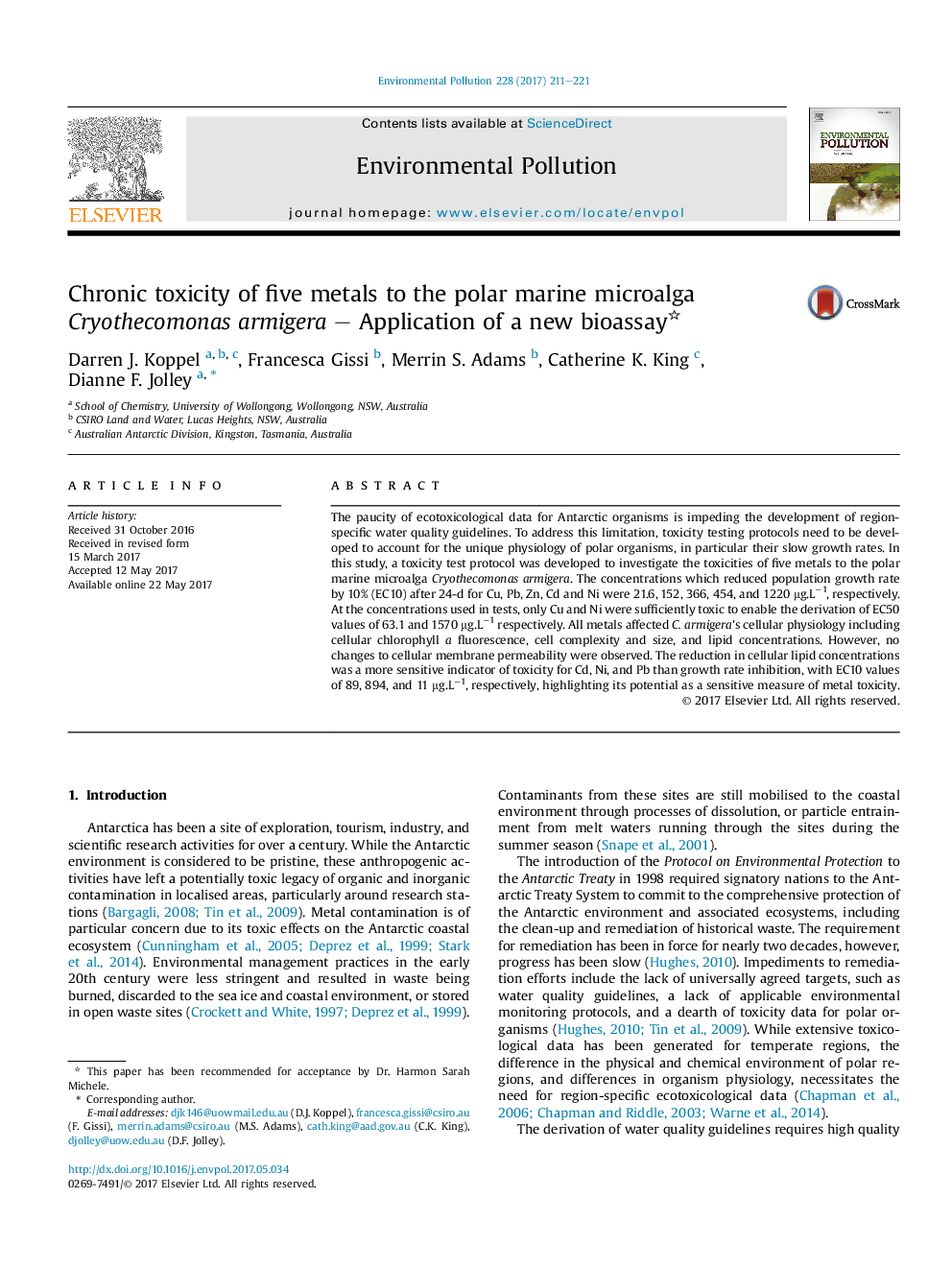| کد مقاله | کد نشریه | سال انتشار | مقاله انگلیسی | نسخه تمام متن |
|---|---|---|---|---|
| 5748869 | 1619145 | 2017 | 11 صفحه PDF | دانلود رایگان |

- A bioassay for testing metal toxicity to a polar marine microalga was developed.
- Toxicity data is presented for inclusion in polar-specific water quality guidelines.
- By population growth inhibition, Cu was the most toxic metal tested.
- All metals reduced algal lipid concentrations: Pb, Cu, and Cd were the most toxic.
- All metals increased algal chlorophyll a fluorescence, except Zn which decreased.
The paucity of ecotoxicological data for Antarctic organisms is impeding the development of region-specific water quality guidelines. To address this limitation, toxicity testing protocols need to be developed to account for the unique physiology of polar organisms, in particular their slow growth rates. In this study, a toxicity test protocol was developed to investigate the toxicities of five metals to the polar marine microalga Cryothecomonas armigera. The concentrations which reduced population growth rate by 10% (EC10) after 24-d for Cu, Pb, Zn, Cd and Ni were 21.6, 152, 366, 454, and 1220 μg.Lâ1, respectively. At the concentrations used in tests, only Cu and Ni were sufficiently toxic to enable the derivation of EC50 values of 63.1 and 1570 μg.Lâ1 respectively. All metals affected C. armigera's cellular physiology including cellular chlorophyll a fluorescence, cell complexity and size, and lipid concentrations. However, no changes to cellular membrane permeability were observed. The reduction in cellular lipid concentrations was a more sensitive indicator of toxicity for Cd, Ni, and Pb than growth rate inhibition, with EC10 values of 89, 894, and 11 μg.Lâ1, respectively, highlighting its potential as a sensitive measure of metal toxicity.
301
Journal: Environmental Pollution - Volume 228, September 2017, Pages 211-221